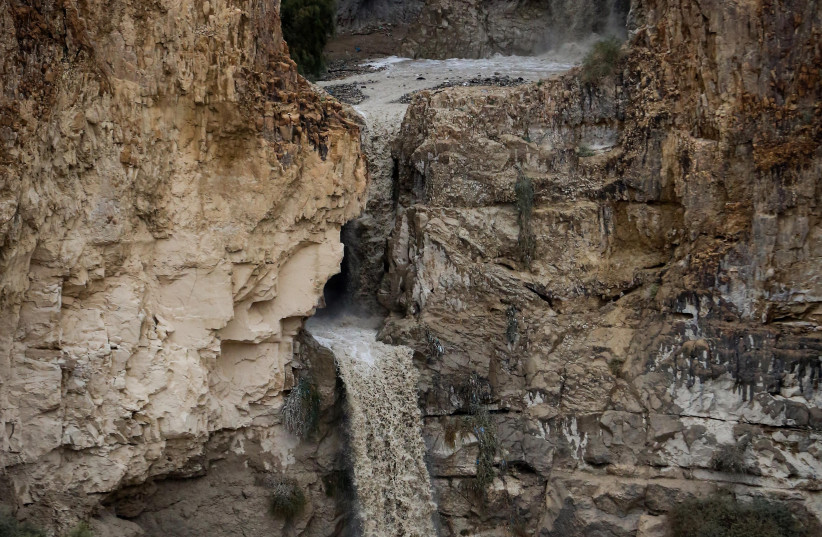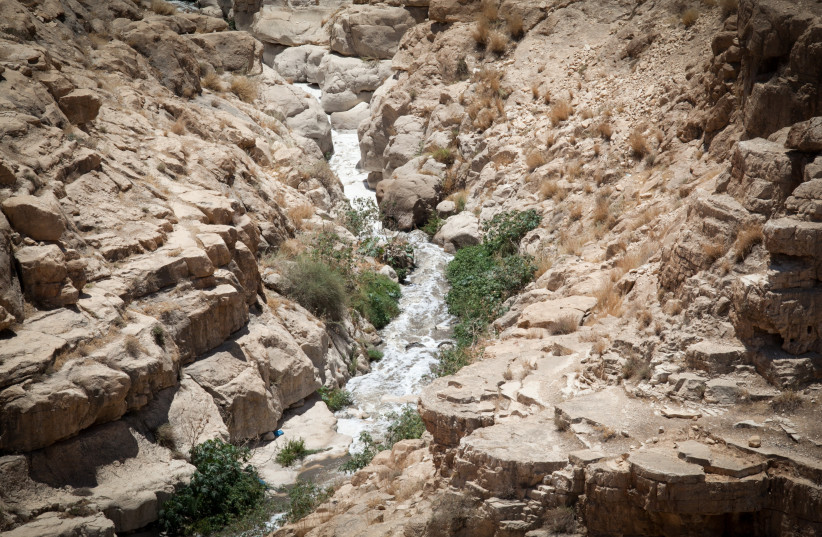The goal was to restore its natural resources, a task estimated at 1 billion shekels. For the first time, the regulation of sewage from eastern Jerusalem is nearing completion.
By LIOR NOVICK/MAARIV
Published: JULY 18, 2022

(photo credit: YOSSI ZAMIR/FLASH90)
The Kidron Valley rehabilitation project is three years in the works. A recent meeting between a number of government agencies and companies provided an update on the progress: For the first time, the regulation of sewage from eastern Jerusalem is nearing completion.
The goal was to restore its natural resources, a task estimated at 1 billion shekels. A number of government bodies and private companies — including the Gihon Group, the water and wastewater utility company for the Jerusalem municipality — presented the latest updates in a meeting.
The site has been under infrastructure renovation for two-and-a-half years and three years of development and planning.
How much has been done?
The group said that, so far, about 16 kilometers out of 37 kilometers of sewage pipes have been laid in the project, and, in the heart of the Judean Desert, a sewage absorption and treatment facility has been built for the absorption of sewage which until now flowed in the river.
View of the Kidron Valley, in the Judean desert. June 24, 2017. (credit: ANAT HERMONY/FLASH90)
Additionally, an infrastructure tunnel was built at a depth of about 60 meters, with a width of about 6 meters and a length of about 1,200 meters, and more than 150,000 cubic meters of dirt and waste were excavated and sorted.
Jordan, the PA and Israel
Some 20,000 tons of garbage were taken to landfills, and about 30,000 cubic meters of dirt were returned for construction in the river. For the first time since the establishment of the State of Israel when Jordan controlled eastern Jerusalem from 1948-67, the regulation of sewage from eastern Jerusalem is nearing completion.
Part of the project was cooperation between Hagihon and the Palestinian Authority.
About 50,000 cubic meters of raw sewage from Jerusalem and surrounding localities are discharged into the river channel annually. Over the years, construction debris and garbage that comes with the sewage stream have piled up on and around the sides of the canal.
Since 2015, the Gihon Group has been leading the planning and implementation of the work plan.
Which agencies are involved?
This was prepared in collaboration with the Water Authority and coordinated with: the Jerusalem Municipality, the Unit for Coordination of Government Activities in the Territories (COGAT), the Civil Administration.
Other government ministries behind the project are: The Environmental Protection Ministry, the Health Ministry, the Defense Ministry, the National Security Council, the Nature and Parks Authority, the Central Command and the Director of Borders and the Seam (where western and eastern Jerusalem connect), Israel Police and Border Police along with cooperation from the Dead Sea Drainage Authority, and more.
In 2018, the overall plan was approved by the Prime Minister’s Office.
“This is a national mission that our people are working on all day and night in many areas, in all weather conditions, for the benefit of residents of Jerusalem and the surrounding area, for nature and heritage values, for the benefit of Israel and the planet,” Avi Balshnikov, Chairman of the Gihon Corporation and Mivtai, the Jerusalem sewage purification facility said.
Rehabilitating the Kidron “will fully regulate and prevent the problem of sewage discharge in the Kidron Basin, and will serve all localities along the river channel. In this way, we’ll return to Kidron the environmental, heritage, tourist and historical splendor of the river.”
“In this way, we’ll return to Kidron the environmental, heritage, tourist and historical splendor of the river.”
Avi Balshnikov, Chairman of the Gihon Corporation and Mivtai, the Jerusalem sewage purification facility
https://www.jpost.com/business-and-innovation/all-news/article-712429

